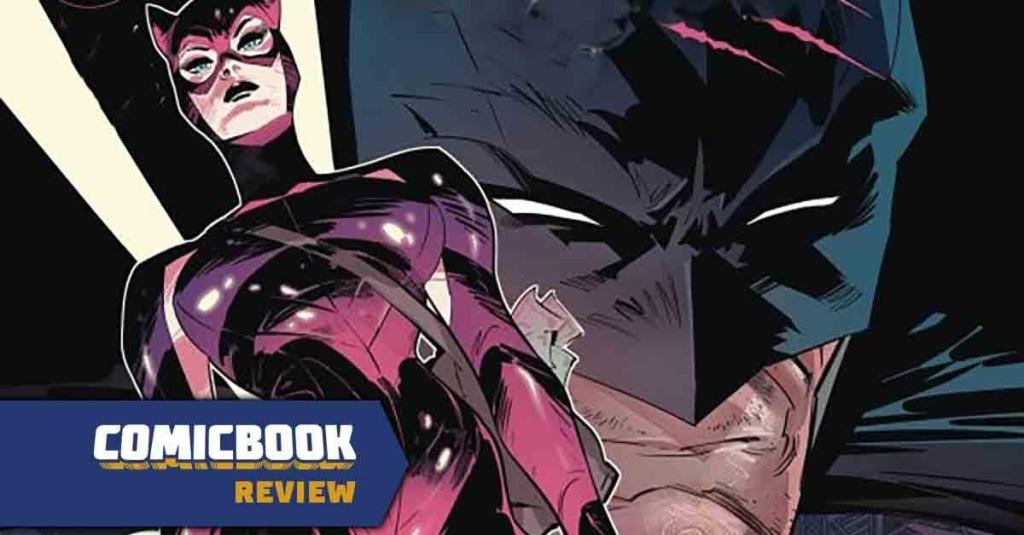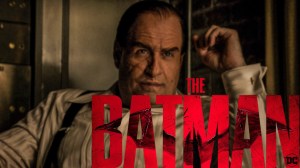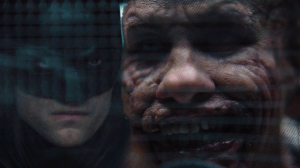Over the character’s nearly century long history, Batman has had one overarching goal: justice. Within the framework of Batman stories, that goal is translated into his fight against crime and criminals in Gotham City as he seeks to free the city from the grips of those who commit crime and do violence so that no one else has to suffer loss and tragedy the way he did as a child. At least, that’s how the goal is interpreted. After all, for 84 years, that’s what we’ve seen Batman do, dropping his civilian persona of Bruce Wayne to take up that of Batman, patrolling the night and fighting the darkest of battles on the city’s streets and beyond. But what happens when violent crime in Gotham City simply drops and former villains embark on new lives with more focused purpose? What happens when the goal is finally in reach – just not the way Batman himself would do it? That is, at is core, the premise of Batman/Catwoman: The Gotham War – Battles Lines #1, but while the idea of seeing Batman come to clash with Catwoman over ideology as Gotham finally gets as close to safe as it has ever been is a hell of a premise, unfortunately the execution of this issue just doesn’t deliver on it.
Videos by ComicBook.com
In Batman/Catwoman: The Gotham War – Battle Lines #1, we catch up with Bruce Wayne/Batman two months after the events of “Knight Terrors” and his own Multiversal battles before that and straight away, it’s the time jump that puts things on an odd course. We’re told that Batman simply took an eight-week nap. Somehow, the man who has pushed his body beyond every conceivable limit for issue after issue for years on end suddenly just really needed a nap after the whole “Knight Terrors” debacle. It’s a convenient way to give the story the runway, timeline-wise, to clean up Gotham without Batman present, but it feels like a strange choice, one that is quickly built upon by having Batman seem to lose most, if not all of the emotional growth we’ve seen him develop in the arcs leading to this one.
As Batman is getting back into his routine, he discovers that Gotham is a much quieter place and we soon discover why. Catwoman has been training former henchmen to, essentially, do crime ethically. Gone are the days of terrorizing the common man and destroying lives in the process. Now, under Selina’s leadership, the only major crimes are being carried out against the very rich and powerful and they are all of the nonviolent sort. No one has to get hurt under Selina’s plan, life is improving for everyone—especially the 99 percent—and crime in the city has dropped so dramatically that Batman’s role might not ever be the same. When Selina presents this all to the Bat Family, some can see her point and support her plan, but some don’t. Notably, Batman is absolutely opposed to it and is determined not only to prove her wrong, but also take her down.
Again, as an idea (save for the weird two month sleeping spell of it all) it’s a fantastic premise but Tini Howard and Chip Zdarsky execute upon it terribly. First up, is the actual construction of the story. We move between Catwoman and Batman and what they are doing and you can see the seams. The flow between the different parts is not great, but even if you can get past the transitions, the writing—particularly when it comes to Catwoman—is stilted. Both Catwoman and Batman come across as poor caricatures of themselves, something that ratchets up once we get to the part where Batman loudly disagrees with Catwoman’s plans. While Catwoman does have a couple of truly great moments (one in particular where she calls Batman out about their wedding that wasn’t), at one point Batman all but has a temper tantrum screaming about how his parents were rich. While it should serve as a reminder that Batman is himself a 1-percenter who has, by and large, contributed just as much to Gotham’s problems as he has fixed them, it instead reads as a comedic bit; it’s strange.
Also weird is that we see some of the other characters have their own reactions to things that either seem off or dialed up too high, but the most notable failure in the story is how we see Batman desperate to find flaw, like he’s looking for violence as if it were a drug he needs and, when he finds one death, one robbery gone wrong, and not even in the way you’d expect it to, he latches onto it like some crazed fiend. This is all after saying the quiet part aloud in that he sees everyone else as people playing pretend at hero and himself being the one true savior of Gotham City. If any of this had been handled with nuance or understanding of any of the emotional work we’ve seen from Batman in recent years, this could have been a great issue and the kickoff to a story that digs deeply into the ideologies of what the best approach to seeking justice is. Instead, what is delivered is the comic book equivalent of a man thumping his chest and screaming about his own greatness. It is such a letdown.
Art-wise, Mike Hawthorne and Adriano Di Benedetto, along with Romulo Fajardo Jr.’s colors are reasonably good. They have a particular style that feels a little messy at times which would be a great fit for where the story is going if it were better constructed.
Ultimately, Batman/Catwoman: The Gotham War – Battle Lines #1 is a comic book with a good premise that can’t make it work without chopping up its characters and reducing them to caricatures. In doing so, what could have been a deeply interesting revelation worth exploring—the idea that Batman’s real goal isn’t justice but his own idea of justice—winds up feeling like the foot stomping of a spoiled child rather than a real conflict between characters who have spent years finding a way to see the world through one another’s eyes. Here’s to hoping that as we get into the story itself in subsequent issues of Batman, Catwoman and beyond this conflict finds the nuance that is so deeply lacking here.
Published by DC Comics
On August 29, 2023
Written by Tini Howard and Chip Zdarsky
Art by Mike Hawthorne and Adriano di Benedetto
Colors by Romulo Fajardo Jr.
Letters by Clayton Cowles
Cover by Jorge Jimenez





